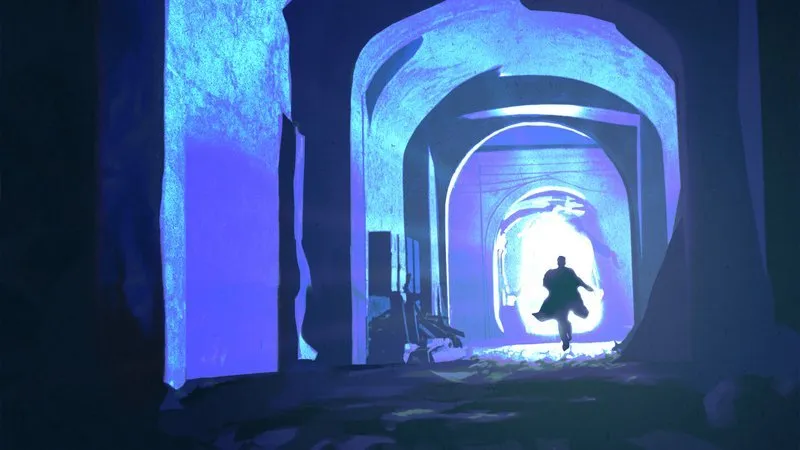
Story and Narrative Development for Video Games 
This course provides an introduction to story and narrative development for video games. Students will learn how to apply traditional narrative structures to game story flows and strategic elements, and gain insight into different story styles and themes. Upon completion, students will have the skills to create a compelling game concept with defined characters, setting, and structure. ▼
ADVERTISEMENT
Course Feature
![]() Cost:
Cost:
Free
![]() Provider:
Provider:
Coursera
![]() Certificate:
Certificate:
Paid Certification
![]() Language:
Language:
English
![]() Start Date:
Start Date:
10th Jul, 2023
Course Overview
❗The content presented here is sourced directly from Coursera platform. For comprehensive course details, including enrollment information, simply click on the 'Go to class' link on our website.
Updated in [March 06th, 2023]
1. Story and Narrative Development: Learners can gain an understanding of how storytelling is used to drive video game play forward. They will learn how to evaluate and interpret different story styles, and how to apply traditional narrative story processes, such as three-act structure, to game story flows and the strategic elements of gameplay.
2. Character and Setting: Learners will learn how to define characters and settings to create a compelling game concept. They will also gain an understanding of how to use these elements to create an immersive and engaging experience for players.
3. Strategic Elements: Learners will gain an understanding of how to use strategic elements to create a game that is both challenging and rewarding. They will learn how to use game mechanics, level design, and other elements to create a game that is both fun and engaging.
4. Creative Thinking: Learners will be encouraged to think creatively and develop their own unique game concepts. They will be asked to explore different ideas and approaches to game design, and to use their creativity to create a game that is both entertaining and engaging.
[Applications]
Upon completion of this course, students will be able to apply the concepts of story and narrative development to their own video game ideas. They will be able to create compelling characters, settings, and structures to drive their game stories forward. Additionally, students will be able to identify and evaluate different story styles and themes in order to create a unique and engaging game experience.
[Career Paths]
1. Game Designer: Game designers are responsible for creating the overall concept and design of a video game. They are responsible for developing the game’s mechanics, storyline, and characters. They also work with other members of the development team to ensure that the game meets the desired specifications. As the gaming industry continues to grow, the demand for game designers is expected to increase.
2. Level Designer: Level designers are responsible for creating the levels and environments within a video game. They use a variety of tools to create the game’s levels, including 3D modeling software and level editors. Level designers must also be able to work with the game’s other designers to ensure that the levels are balanced and fun to play.
3. Narrative Designer: Narrative designers are responsible for creating the story and characters within a video game. They work with the game’s other designers to ensure that the story and characters are engaging and believable. They also work with the game’s writers to create dialogue and other narrative elements. As the gaming industry continues to grow, the demand for narrative designers is expected to increase.
4. Writer: Writers are responsible for creating the dialogue and other narrative elements within a video game. They work with the game’s other designers to ensure that the dialogue and narrative elements are engaging and believable. They also work with the game’s narrative designers to create a cohesive story. As the gaming industry continues to grow, the demand for writers is expected to increase.
[Education Paths]
1. Bachelor of Arts in Game Design: This degree path focuses on the creative aspects of game design, such as story development, character design, and level design. Students learn how to create engaging stories and characters, as well as how to use game engines and other software to create interactive experiences. This degree path is becoming increasingly popular as the gaming industry continues to grow.
2. Bachelor of Science in Computer Science: This degree path focuses on the technical aspects of game design, such as programming, software engineering, and artificial intelligence. Students learn how to create game engines, develop game logic, and create interactive experiences. This degree path is becoming increasingly popular as the gaming industry continues to grow and demand for skilled programmers increases.
3. Master of Arts in Game Design: This degree path focuses on the advanced aspects of game design, such as narrative design, game mechanics, and user experience. Students learn how to create engaging stories and characters, as well as how to use game engines and other software to create interactive experiences. This degree path is becoming increasingly popular as the gaming industry continues to grow and demand for skilled game designers increases.
4. Master of Science in Computer Science: This degree path focuses on the advanced technical aspects of game design, such as artificial intelligence, machine learning, and virtual reality. Students learn how to create game engines, develop game logic, and create interactive experiences. This degree path is becoming increasingly popular as the gaming industry continues to grow and demand for skilled programmers increases.
Course Syllabus
Week 1: An Introduction to Story
For the first week of the class, we will be analyzing the components of three-act structure using a classic fairytale as an example. We'll examine the characters in the story by figuring out their goals and the main conflict that creates a rising arc of action to keep the audience interested.Week 2: Game Story Structure
In this week, we will draw a parallel between last week’s discussion on rising action and how that relates to gameplay. Looking at a pair of contemporary games, we'll learn how to identify story structure and themes of rising action, just like we would with traditional stories and movies. Lastly, we’ll evaluate the role that primary and secondary characters come to play in the unveiling of a game’s story and discuss the importance of understanding how these games present their stories in the actual gameplay.Week 3: Story Workshop
This week, we explore ideation techniques and learn how to consolidate our ideas into more formalized stories specifically for pushing them towards a game design. We will take a look at the importance of, and ways to refine, characters and settings as we develop an initial concept in story form first, and then next week, into a game.Week 4: From Story to Game
For this last week of class, we will begin by seeing what a game design document is, and evaluate a few different templates you can use. Then, we will take the story we built in last week’s course, The Shooter, and define it as a playable game outlined in a game design document.Course Provider

Provider Coursera's Stats at AZClass
Discussion and Reviews
0.0 (Based on 0 reviews)
Explore Similar Online Courses

Sketch Course - UI Design

Dominate GMAT Verbal - Comprehensive GMAT Verbal Prep Course

Python for Informatics: Exploring Information

Social Network Analysis

Introduction to Systematic Review and Meta-Analysis

The Analytics Edge

DCO042 - Python For Informatics

Causal Diagrams: Draw Your Assumptions Before Your Conclusions

Whole genome sequencing of bacterial genomes - tools and applications

Visual Storytelling for Film and Video Games

Cinematic Storytelling

ATA: Constructing a Story - Advanced Visual Storytelling
 Related Categories
Related Categories
 Popular Providers
Popular Providers
Quiz
 Submitted Sucessfully
Submitted Sucessfully
1. What is the traditional narrative story process discussed in this course?
2. What is the primary focus of this course?
3. What is the goal of this course?


Start your review of Story and Narrative Development for Video Games